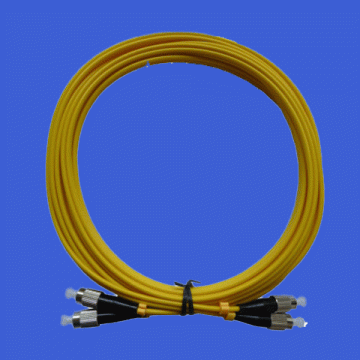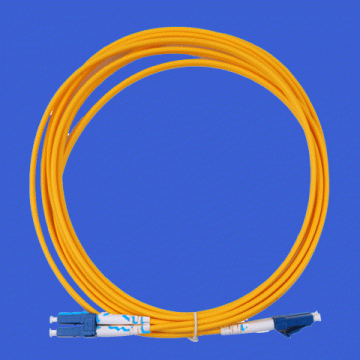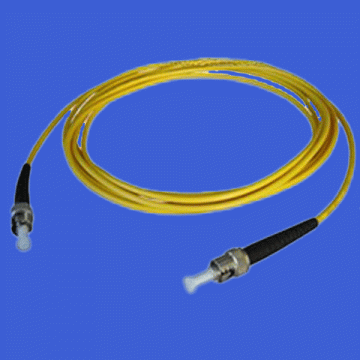Product Detail
Application:
1. Optical fiber communication system
2. Optical fiber access network
3.Optical fiber data transmission
4. Optical fiber CATV
5. LAN 6. Test equipment
Features:
1.Low insertion loss
2. Good repeatability
3. High return loss
4. Good interinterpolation performance
5. Good temperature stability
Performance indicators:
Parameter Unit FC/PC FC/UPC FC/APC FC
Insertion loss: single-mode dB Typical value: 0.2; Maximum value: 0.3
Multimode dB typical value: 0.2; Maximum value: 0.5
Repetitive dB 0.1 or less
Interchangeability dB 0.2 or less
Return loss: when the end face of single-mode dB is PC UPC: ≥50; When the face is APC: ≥60
Multimode dB or 36
Insertion and removal times: ≥1000 times
Operating temperature :℃-40 ~ +80
Optical fiber type: SMF28,62.5/125um to 50/125um
Buying Guide:
Fc-fc Multi/single mode single/dual core 3.0/2.0/0.9 3m
Fc-sc Multi/single mode single/dual core 3.0/2.0/0.9 3m
Fc-st Multi/single mode single/dual core 3.0/2.0/0.9 3m
Fc-lc Multi/single mode single/dual core 3.0/2.0/0.9 3m
Sc-st Multi/single mode single/dual core 3.0/2.0/0.9 3m
Sc-lc Multi/single mode single/dual core 3.0/2.0/0.9 3m
St-lc Multi/single mode single/dual core 3.0/2.0/0.9 3m
Introduction to the
Optical fiber jumpers are used to connect the link from the device to the optical fiber. With a thick protective layer, generally used in the connection between the optical terminal machine and the terminal box.
Fiber hop classification:
Optical fiber jumper according to the different transmission media can be divided into common silicon fiber single-mode, multi-mode jumper, as well as other optical fiber jumper such as plastic transmission media; According to the connector structure, it can be divided into FC jumper, SC jumper, ST jumper, LC jumper, MTRJ jumper, MPO jumper, MU jumper, SMA jumper, FDDI jumper, E2000 jumper, DIN4 jumper, D4 jumper and so on.
Common optical fiber jumpers can be classified into LC-LC, FC-FC, FC-SC, FC-LC, FC-ST, SC-SC, and SC-ST.
Single-mode Fiber: Generally, the jumper is yellow, and the connector and protective sleeve are blue. Long transmission distance.
Multi-mode Fiber: Generally, the jumper of the Fiber is orange, and some are gray. The connector and protection cover are beige or black. Short transmission distance.
Use of Optical fiber
The optical transceivers at both ends of an optical fiber jumper must send and receive the same wavelength, that is, the optical transceivers at both ends of the optical fiber must be of the same wavelength. A simple way to distinguish the optical transceivers is to use the same color. Generally, short-wave optical modules use multi-mode optical fibers (orange optical fibers), and long-wave optical modules use single-mode optical fibers (yellow optical fibers) to ensure the accuracy of data transmission.
Do not excessively bend and loop the optical fiber in use, which will increase the attenuation of light in the transmission process.
Use protective sleeves to protect optical fiber connectors after optical fiber jumpers are used. Dust and oil may damage optical fiber coupling.
Product Selection Guide
Optical fiber jumpers are classified into the following types by type: LC-LC, LC-SC, LC-ST, LC-FC, ST-ST, SC-SC, and ST-SC. There are two types of optical fiber: single-mode optical fiber and multi-mode optical fiber. The jumper length can be 0.5m, 1m, 2m, 3m, 5m, or 10m. According to the material of cable outer protective layer, it can be divided into ordinary type, ordinary flame retardant, low smoke halogen-free type, low smoke halogen-free flame retardant type, etc.
According to grade of building fire prevention and fire-resistant requirement to material, integrated wiring system should take corresponding measure. Flame-retardant cables and optical cables should be used for laying cables or optical cables in flammable areas and building shafts; In large public places should be flame retardant, low smoke, low poison cable or optical cable; Flame-retardant wiring equipment should be used between adjacent devices or between junctions. Construction, installation points
Please refer to the requirements in GB/T 50312-2000 and CECS 89:97.
The difference between an optical fiber jumper and a tail fiber
Optical fiber jumpers are used to connect the link from the device to the optical fiber. With a thick protective layer, generally used in the connection between the optical terminal machine and the terminal box.
Tail fiber is also called pig tail line, only one end has a connector, and the other end is the broken end of a fiber optic cable core, and other fiber optic cable core is connected by fusion, often appear in the optical fiber terminal box, used to connect the fiber optic cable and fiber transceiver (also used between couplers, jumpers, etc.).
Optical fiber connector is removable (activities) between optical fiber and optical fiber connection device, it is to put the fiber of two surface precision docking, so that the optical output of light energy to maximize the coupling to the receiving optical fiber, and optical link due to the intervention and to minimize the effects on the system, it is the basic requirement of optical fiber connector. To a certain extent, optical fiber connectors also affect the reliability and performance of optical transmission systems.
 News
News TianChang News
TianChang News TianChang News
TianChang News TianChang Information
TianChang Information TianChang Product
TianChang Product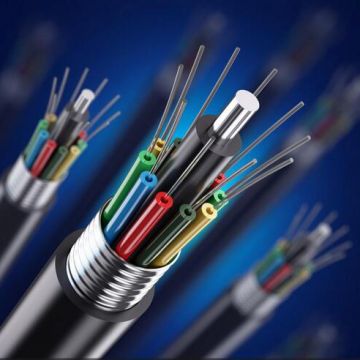 Products
Products Used for outdoor optical cable, belongs to a kind of optical cable, because the most suitable for outdoor so called outdoor optical cable, it is durable, can withstand the wind and the sun, the outer packing is thick, with pressure resistance, corrosion resistance, tensile resistance and some mechanical characteristics, environmental characteristics.
Used for outdoor optical cable, belongs to a kind of optical cable, because the most suitable for outdoor so called outdoor optical cable, it is durable, can withstand the wind and the sun, the outer packing is thick, with pressure resistance, corrosion resistance, tensile resistance and some mechanical characteristics, environmental characteristics. Used for outdoor optical cable, belongs to a kind of optical cable, because the most suitable for outdoor so called outdoor optical cable, it is durable, can withstand the wind and the sun, the outer packing is thick, with pressure resistance, corrosion resistance, tensile resistance and some mechanical characteristics, environmental characteristics.
Used for outdoor optical cable, belongs to a kind of optical cable, because the most suitable for outdoor so called outdoor optical cable, it is durable, can withstand the wind and the sun, the outer packing is thick, with pressure resistance, corrosion resistance, tensile resistance and some mechanical characteristics, environmental characteristics. Indoor optical cable is the optical cable laid in the building, mainly used for communication equipment, computers, switches and end-user equipment in the building.To get the message across.
Indoor optical cable is the optical cable laid in the building, mainly used for communication equipment, computers, switches and end-user equipment in the building.To get the message across. Fiber optic distribution frame is an important supporting equipment in optical transmission system. It is used for optical fiber fusion of optical cable terminal, adjustment of optical connector, storage of excess tail fiber and protection of optical cable and other functions.
Fiber optic distribution frame is an important supporting equipment in optical transmission system. It is used for optical fiber fusion of optical cable terminal, adjustment of optical connector, storage of excess tail fiber and protection of optical cable and other functions.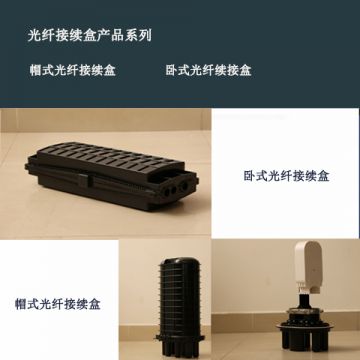 Cable connection box, also called cable connector box and the gun barrel, is the place where the end of the cable connection, and then through the optical fiber jumper wire connected to the light switch, prevent heat, cold in nature, light, material aging caused by oxygen and microorganism.
Cable connection box, also called cable connector box and the gun barrel, is the place where the end of the cable connection, and then through the optical fiber jumper wire connected to the light switch, prevent heat, cold in nature, light, material aging caused by oxygen and microorganism. Fiber optic jumpers are used for jumpers from equipment to fiber optic cabling links.It has a thick protective layer, which is generally used in the connection between optical terminal machine and terminal box. It is applied in some fields such as optical fiber communication system, optical fiber access network, optical fiber data transmission and local area network.
Fiber optic jumpers are used for jumpers from equipment to fiber optic cabling links.It has a thick protective layer, which is generally used in the connection between optical terminal machine and terminal box. It is applied in some fields such as optical fiber communication system, optical fiber access network, optical fiber data transmission and local area network. Special optical cable
Special optical cable Optical cable intelligent monitoring system
Optical cable intelligent monitoring system Solutions
Solutions Operator Case
Operator Case Operator Case
Operator Case Government and military characteristic cases
Government and military characteristic cases Airport and rail transit cases
Airport and rail transit cases High speed case
High speed case Smart City Cases
Smart City Cases Real estate, hotel cases
Real estate, hotel cases Services
Services Tiangyong communication technical solutions mainly include the solution for customers to pre-sale services and product maintenance and other basic services, so that each consumer to buy quality products and services, but consumers are often easy to be confused by some false impression, and into the "quality products" misunderstandings
Tiangyong communication technical solutions mainly include the solution for customers to pre-sale services and product maintenance and other basic services, so that each consumer to buy quality products and services, but consumers are often easy to be confused by some false impression, and into the "quality products" misunderstandings Tiangyong communication technical solutions mainly include the solution for customers to pre-sale services and product maintenance and other basic services, so that each consumer to buy quality products and services, but consumers are often easy to be confused by some false impression, and into the "quality products" misunderstandings
Tiangyong communication technical solutions mainly include the solution for customers to pre-sale services and product maintenance and other basic services, so that each consumer to buy quality products and services, but consumers are often easy to be confused by some false impression, and into the "quality products" misunderstandings We take customer satisfaction as the tenet, timely response to customer needs as the key, to provide high value services for customers as the goal, with customized customer support service solutions, to win the market and customer respect.
We take customer satisfaction as the tenet, timely response to customer needs as the key, to provide high value services for customers as the goal, with customized customer support service solutions, to win the market and customer respect. Tianchang communication channel management mainly includes channel announcements, channel policies, etc., the search of partners
Tianchang communication channel management mainly includes channel announcements, channel policies, etc., the search of partners Resources
Resources Guangzhou tianchang communication technology co., LTD is looking for a position
Guangzhou tianchang communication technology co., LTD is looking for a position Guangzhou tianchang communication technology co., LTD is looking for a position
Guangzhou tianchang communication technology co., LTD is looking for a position Employees Story
Employees Story Cultivation of Talents
Cultivation of Talents In order to make the human resource system run effectively, we undertake the company's strategy, culture and core competitiveness, constantly introduce the industry's advanced methodology and best practices, and learn from the industry and cross-border benchmarking and advanced enterprises, so as to continuously optimize the human resource system
In order to make the human resource system run effectively, we undertake the company's strategy, culture and core competitiveness, constantly introduce the industry's advanced methodology and best practices, and learn from the industry and cross-border benchmarking and advanced enterprises, so as to continuously optimize the human resource system laboratory
laboratory Laboratory Profile
Laboratory Profile Laboratory Profile
Laboratory Profile The Scientific Research Direction
The Scientific Research Direction The latest News
The latest News Open Topic
Open Topic About Us
About Us Contact Us
Contact Us Contact Us
Contact Us Telecommunications, Mobile, Unicom, Radio and Television, Power, Transportation, Military, Intelligent Building, Government, Public Security, Real Estate, Manufacturing, Education, Hospitals, Finance...
Telecommunications, Mobile, Unicom, Radio and Television, Power, Transportation, Military, Intelligent Building, Government, Public Security, Real Estate, Manufacturing, Education, Hospitals, Finance... Through the tyre certification and ISO9001 international quality system certification, and in accordance with the tyre certification and ISO9001 international quality system operation requirements, has established a set of efficient production process, perfect process guidance system and process quality continuous monitoring system.
Through the tyre certification and ISO9001 international quality system certification, and in accordance with the tyre certification and ISO9001 international quality system operation requirements, has established a set of efficient production process, perfect process guidance system and process quality continuous monitoring system. 企业定位:通信产品整体解决方案服务商。业务涵盖光缆、光缆智能监测系统的生产、销售以及提供客户所需的通信整体解决方案。 企业愿景:打造通信行业(BOSUN)国际知名品牌,成为优秀的通信解决方案提供商。 企业使命:让通信更流畅, 让沟通无障碍。 价值理念:诚信、务实、 创新、尽责。
企业定位:通信产品整体解决方案服务商。业务涵盖光缆、光缆智能监测系统的生产、销售以及提供客户所需的通信整体解决方案。 企业愿景:打造通信行业(BOSUN)国际知名品牌,成为优秀的通信解决方案提供商。 企业使命:让通信更流畅, 让沟通无障碍。 价值理念:诚信、务实、 创新、尽责。 As a core technology brand in optical communication field, BOSUN has become an excellent representative among the national "innovative enterprises". Every year, 18% of the sales revenue will be invested in R&D, of which 38% will be invested in future high-end technology R&D.Over the years, BOSUN has made steady progress on the innovation road of independent research and development, leading and promoting the rapid development of cutting-edge optical communication technology.
As a core technology brand in optical communication field, BOSUN has become an excellent representative among the national "innovative enterprises". Every year, 18% of the sales revenue will be invested in R&D, of which 38% will be invested in future high-end technology R&D.Over the years, BOSUN has made steady progress on the innovation road of independent research and development, leading and promoting the rapid development of cutting-edge optical communication technology.




